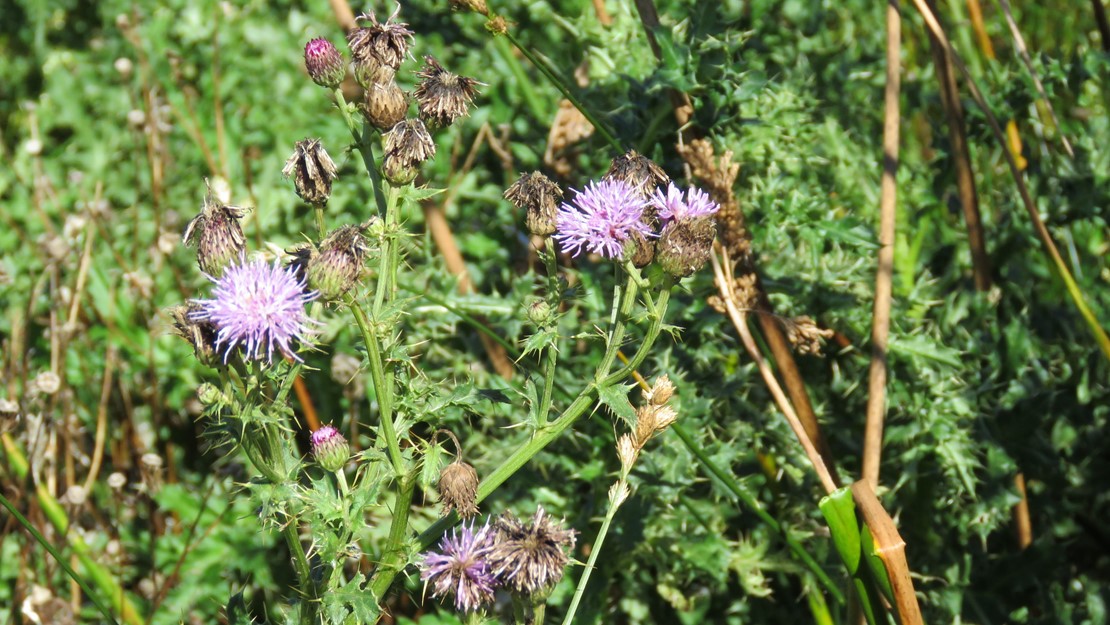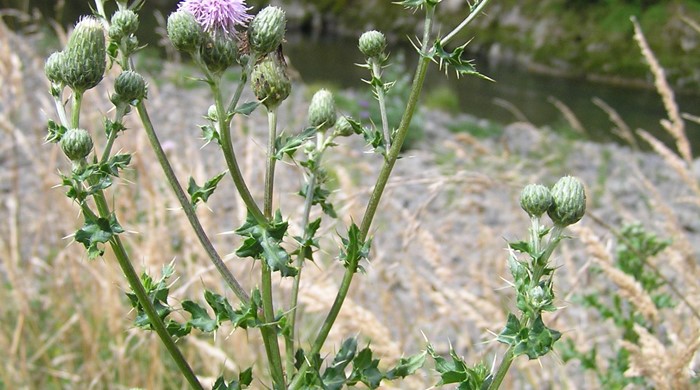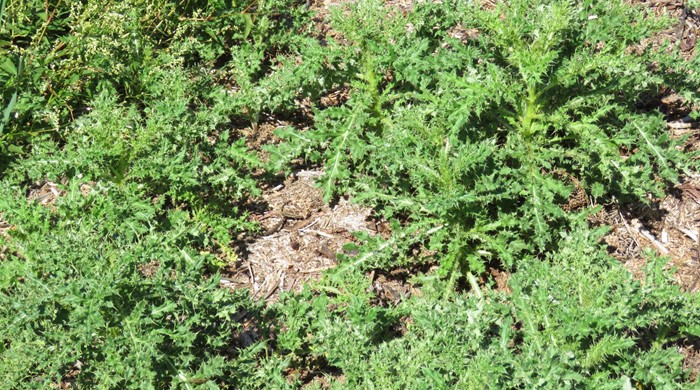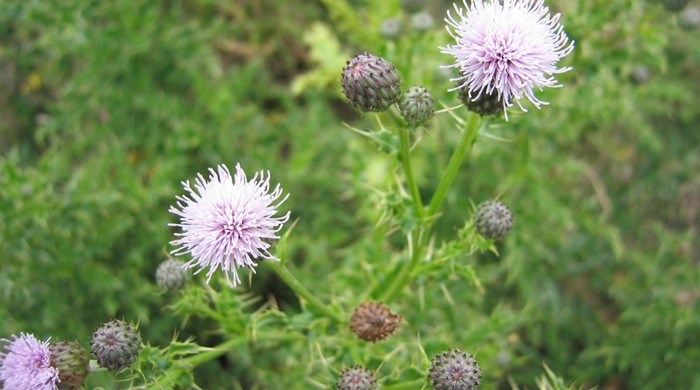Cirsium arvense
Californian thistle
Family: Asteraceae
Origin: Eurasia

Regional Pest Management Plan (RPMP) status
- Whole region — Sustained control
- Hauraki Gulf Controlled Area Notice pest
General description
Rhizomatous perennial herb. Leaves are sessile, < 15 x 5 cm and oblong, with prickles < 1 cm long. Flowers are red/pink/purple and borne in December – February. Achenes have white pappus attached.
What you need to know
To help protect our environment, from 1 September 2021, you:
- will not be allowed to breed, distribute, release or sell Californian thistle within the Auckland region.
- will not be allowed to plant Californian thistle within the Auckland region, unless you are transferring an existing plant on your land to another location within the boundaries of the same property.
- must destroy any Californian thistle on land that you occupy if it has been planted in breach of the above rules and you are directed to do so by an authorised person.
Habitats
Pasture, roadsides, riparian margins, open coastal areas.
Dispersal
Seeds dispersed by wind. Vegetative spread from rhizomes. Human-mediated dispersal through contamination of machinery.
Impact on environment
Infests pasture, reducing milk and animal yields due to herbivore avoidance. Spines injure livestock’s mouths, promoting ‘scabby mouth disease’. Seed heads contaminate wool.
Control
Site management
Maintaining good pasture cover can prevent establishment or suppress an infestation. Mowing before flowering will reduce spread of seeds.
Recommended approaches
Physical control
Method: Dig or grub out.
Plant parts requiring disposal: Seeds.
Disposal options: Remove to greenwaste or landfill if practical.
Biocontrol
Check for presence of agents:
- Californian thistle gall fly ( Urophora cardui).
- Californian thistle leaf beetle (Lema cyanella).
- Green thistle beetle (Cassida rubignosa).
For more information about how biocontrol works, see What is biocontrol?
Community agrichemical control recommendations
Basic Growsafe certified: Foliar spray with 100ml glyphosate green per 10L of water.
Safety notes
Plant has spines.
Caution: When using any herbicide or pesticide please read the label thoroughly to ensure that all instructions and safety requirements are followed.






